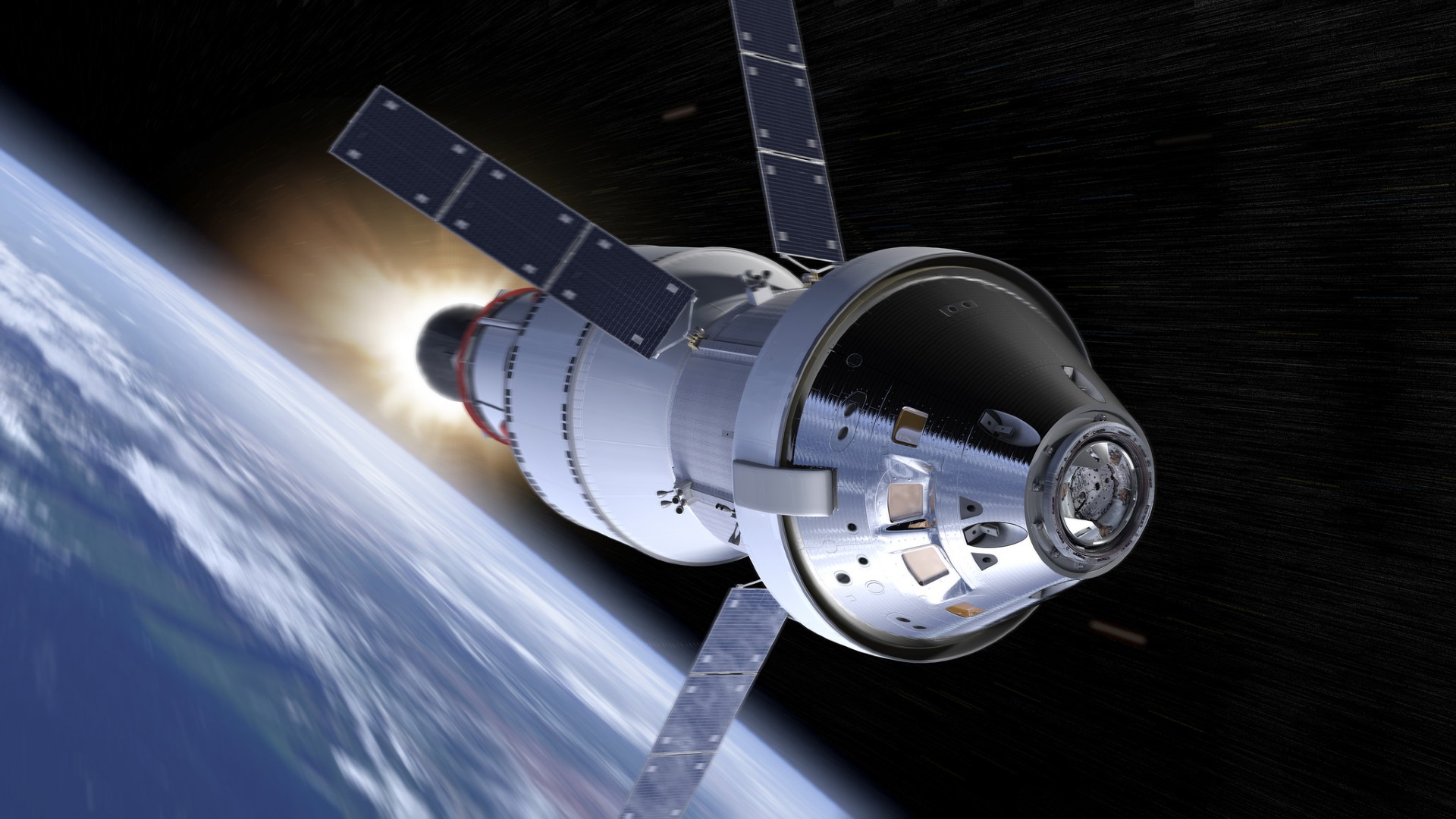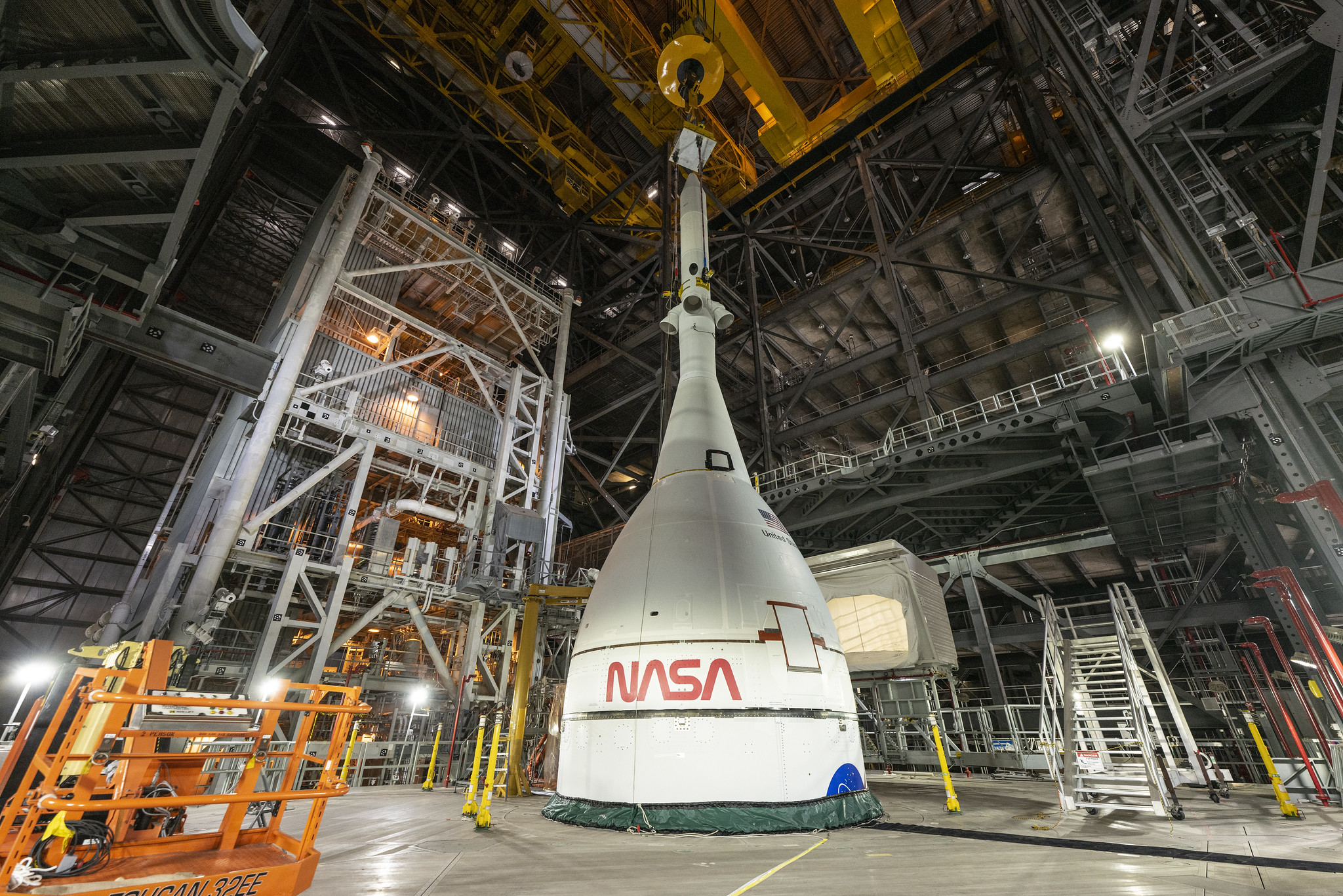NASA's Orion spacecraft faces huge test for moon flights and deep space
The Orion spacecraft will build upon over half a century of spaceflight science to carry humanity beyond the limits of the Earth's orbit, back to the moon, and to Mars.

Humanity is preparing to journey further into space than ever before.
Humankind will be returning to the moon, and eventually, setting foot on Mars for the first time. These next steps in crewed space exploration are part of the Artemis mission. And a key component of this mission is the crew vehicle, the Orion spacecraft, which capitalizes on over five decades of NASA space science.
The first major test of Orion will occur at the end of August 2022, when the most powerful rocket ever built by humanity — the Space Launch System (SLS) — will catapult the Orion capsule with crew farther than any other vessel intended for astronauts has ever gone before.
Following this test, officially designated the Artemis I mission, the capsule will eventually be the vehicle that carries humanity boldly forward into the next era of space exploration.
Related: NASA's Artemis Program
"The Orion spacecraft is the capsule that will carry astronauts and scientific payloads to the moon," Madison E. Tuttle, public affairs specialist at NASA's Kennedy Space Center, told Space.com. "Serving as the exploration vehicle that will carry the crew to space, provide emergency abort capability, sustain the crew during the space travel, and provide safe re-entry from deep space return velocities, it is built to take humans farther than they've ever gone before."
The genesis of Orion
The Orion spacecraft has three main components. From top to bottom these are: The launch abort system designed to whisk the craft and crew to safety in event of something going wrong on launch; the crew module which is 16 feet in diameter (5 meters) and equipped with the latest advances in habitation, avionics, and life support; and below these is European Space Agency (ESA) provided service module, tasked with supplying the craft with oxygen, water, and power in the electricity converted from solar energy collected by the craft's three unfolding solar arrays.
Breaking space news, the latest updates on rocket launches, skywatching events and more!
The Orion spacecraft — officially titled the Orion Multi-Purpose Crew Vehicle — was initially conceived by Lockheed Martin in the early 2000s. Its history can be traced back to a crew exploration vehicle (CEV) announced in January 2004 for NASA's "Vision for Space Exploration" program.
The project would pick up the name 'Orion' when it was put forward as a CEV for NASA's Constellation program, in which crew and cargo versions would have journeyed to the International Space Station (ISS), in addition to returning humans to the moon.
After the Constellation program was canceled in 2010, Orion survived, also outlasting the Ares 1 rocket that was originally slated to carry it into space. In 2011, the production of the Orion vehicle was announced by NASA, with Lockheed Martin taking the lead in building the command module of the craft.

In 2012, the ESA announced the possibility of a collaboration with NASA to provide a service module that could pair up with Orion. The same year the building of this Orion service module was granted to Airbus Defense and Space.
By 2020 there were at least three different versions of the Orion spacecraft in production with Lockheed Martin saying six missions using Orion had been formally agreed with NASA. The company says there remains the possibility of a for craft and a further 12 missions.
Between 2006 and 2020, the funding for Orion totaled almost $19 billion, which adjusted for inflation is around $21.5 billion, according to NASA New Start Inflation Indices.
Testing of the various components of the Orion craft, and the use of various models and boilerplate substitutes for the capsule date back as early as 2007.
In December 2014, the Orion craft launched atop a United Launch Alliance Delta Heavy rocket for a short duration flight to gather data about the spacecraft's performance. The flight — Exploration Flight Test-1 (EFT-1) — lasted four hours and 24 minutes and ended when the capsule landed in the Pacific Ocean.
In 2021, the Orion craft was placed atop the SLS rocket. Earlier this year, the readied Artemis I rocket was rolled out to the launch pad at Kennedy Space Station, Florida, ready for its next, most significant test.

"All this work comes together as the most powerful rocket ever built that launches the most sophisticated crew spacecraft ever built," SLS Associate Program Manager Sharon Cobb, told Space.com. "It represents human ingenuity and dedication and is something we can all be proud of."
During the uncrewed flight of the Orion spacecraft as part of the Artemis 1 mission, the capsule will voyage farther than any vessel intended to carry a crew has ever ventured before.
"Artemis I will test all the systems on the capsule and the modifications made after the 2014 test," Tuttle explained. "It is critical to ensure Orion can safely launch and splashdown ahead of missions with astronauts on board."
Related: Orion spacecraft: NASA's next-gen capsule to take astronauts beyond Earth orbit
The SLS with the Orion craft at its tip will blast off with a pair of five-segment boosters and four RS-25 engines delivering 8.8 million pounds (3.9 million kg) of thrust. Tuttle explained that the power of the SLS makes it the only launch vehicle capable of taking the Orion spacecraft on its trip to the moon and beyond.
Once reaching an altitude of around 100 miles (160 km) above Earth the SLS will jettison its boosters and service module panels, and Orion will jettison its launch abort system. The core stage engines will shut down and it will separate from Orion.
As it orbits the Earth, around two hours after launch, the Interim Cryogenic Propulsion Stage (ICPS) of the SLS upper stage gives the Orion craft the final push it needs to reach the moon and beyond.

Propelled by its service module, Orion will journey 280,000 miles (450,000 kilometers) away from Earth. During this time, NASA engineers will be monitoring Orion via the Deep Space Network testing its ability to navigate, communicate, and operate in a deep space environment.
Orion's systems will be checked during its several-day trip to 62 miles (100 km) above the lunar surface. Orion will then use the gravitational influence of the moon to propel itself deeper into space, settling in an orbit about 40,000 miles (64,000 kilometers) from the moon.
After around six days in this orbit, Orion will once again use a close flyby of the moon to accelerate back to Earth. It will re-enter the atmosphere at 25,000 miles per hour (40,200 km/h) experiencing temperatures of almost 5,000 degrees Fahrenheit (2,760 degrees Celsius). The craft will be protected by the world's largest heat shield — 16.5 feet (5 meters) in diameter — located at the base of the crew module as well as by sophisticated thermal tiles.
The safe re-entry and precision landing off the coast of California represent the final test of Orion. The only part of the craft that will reach Earth again is the crew module.
The mission will last between four and six weeks, the longest period a vehicle designed to carry humans has ever been in space without docking at a space station, and will see the Orion craft journey over 1.3 million miles (2.1 million km).
"Orion is larger than other spacecraft to allow for the extra days and miles needed to reach lunar orbit. It will fly farther than any spacecraft built for humans has ever flown," Tuttle said. "Not only will Orion will stay in space longer than any human spacecraft has without docking to a space station, but it will also return home faster and hotter than ever before."
Following the uncrewed Artemis I mission, the next major test of the Orion craft will be the Artemis II flight. This will see the Orion craft crewed in space for the first time.

Later, during Artemis III which is set for no earlier than 2024, Orion will carry a woman and a person of color to the moon for the first time, setting down at the lunar south pole.
"The two missions following Artemis I will fly astronauts to lunar orbit and Artemis III will carry astronauts to the moon along with a human lander system," Tuttle explained. "Artemis II will be the first time crew has flown on Orion and they will spend time orbiting the Moon and putting Orion's systems to the test ahead of the Artemis III Moon landing."
Related: NASA's Artemis 3 moon-landing astronauts will explore 1 of these 13 lunar locales
Airbus Defense and Space began the construction of a second service unit in 2017 which will accompany the Orion spacecraft on the Artemis II mission.
Laura Poliah is the test lead of the Orion spacecraft project. Ahead of the Artemis I launch, she reflected on the significance of the mission and the journey Orion has taken to get to this point.
"As we prepare for the Orion Spacecraft to take its first journey around the moon and back, I reflect on the countless hours of design, assembly, and testing performed with our various partners to make it here," Poliah told Space.com. "There is a wide range of emotions from anticipation to exhilaration, but most of all I have so much pride in my team and the work we have contributed to help usher our generation into a new era of space exploration; it has been a great honor."
Additional Reading
A key component of the Artemis program is the Space Launch System megarocket, the most powerful rocket devised by humanity.
NASA's Artemis program will see humans once again step foot on the lunar surface and travel beyond to Mars.
Bibliography
"Artemis." NASA (2022).
"Around the Moon with NASA's First Launch of SLS with Orion." NASA (2022).
"Meet NASA's Orion Spacecraft." NASA (2022).
"Orion Overview." NASA (2022).
"NASA's Orion Spacecraft." NASA (2022).
"NASA FY19 Inflation Tables — to be utilized in FY20." NASA (2020).
"LIFTOFF! Orion Begins New Era in Space Exploration!" NASA (2014).
"NASA's Orion Spacecraft, Lockheed Martin." Lockheed Martin (2022).
Follow us on Twitter @Spacedotcom or on Facebook.

Robert Lea is a science journalist in the U.K. whose articles have been published in Physics World, New Scientist, Astronomy Magazine, All About Space, Newsweek and ZME Science. He also writes about science communication for Elsevier and the European Journal of Physics. Rob holds a bachelor of science degree in physics and astronomy from the U.K.’s Open University. Follow him on Twitter @sciencef1rst.
